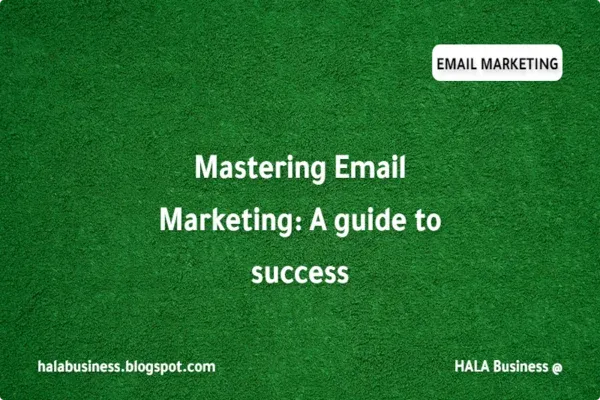Email marketing is a powerful tool for businesses of all sizes to connect with their audience and drive sales.
However, in order for your email marketing efforts to be successful, it is important to understand the basics of how it works, as well as best practices for creating and sending effective campaigns.
In this article, we will take a deep dive into email marketing and explore everything you need to know to create and launch successful campaigns that drive results. From understanding the basics of email marketing to best practices for creating and sending effective campaigns, we've got you covered.
Understanding the Basics of Email Marketing
Email marketing is the process of sending commercial messages, typically to a group of people, using email. These messages can be in the form of promotional emails, newsletters, or transactional emails.
The key to successful email marketing is understanding your audience and tailoring your messages to them. This means segmenting your email list based on demographics, behavior, and other characteristics, as well as creating personalized content that speaks directly to the needs and interests of each segment.
Creating Effective Email Campaigns
When it comes to creating effective email campaigns, there are several key elements to consider. These include:
- Subject line: This is the first thing that people see when they receive your email, so it's important to make sure it is clear, compelling, and relevant.
- Preheater text: This is the text that appears below the subject line in most email clients. It's a great place to include a call-to-action or a teaser for what's inside the email.
- Header and footer: These are the top and bottom of your email, respectively. They should include your logo, your contact information, and any other important information.
- Body content: This is the main content of your email. It should be clear, concise, and engaging. Use subheadings, images, and other formatting tools to break up the text and make it easy to read.
- Call-to-action: This is the button or link that you want people to click on in your email. Make sure it is prominently placed and clearly labeled.
Best Practices for Sending Email Campaigns
Once you've created your email campaign, it's time to send it out to your audience. Here are some best practices to follow when sending out your email campaigns:
- Segment your list: As mentioned earlier, it's important to segment your email list based on demographics, behavior, and other characteristics. This will allow you to send more targeted and personalized messages.
- Test your emails: Before sending your email to your entire list, be sure to test it first. This will allow you to catch any errors or issues before they reach your entire audience.
- Use a consistent sending schedule: Choose a consistent schedule for sending out your emails, whether it's daily, weekly, or monthly. This will help your audience develop a sense of when they can expect to hear from you.
- Measure your results: Use metrics such as open rate, click-through rate, and conversion rate to track the success of your email campaigns. This will allow you to make data-driven decisions about how to improve future campaigns.
Conclusion
Email marketing is a powerful tool for businesses of all sizes to connect with their audience and drive sales. However, in order for your email marketing efforts to be successful, it is important to understand the basics of how it works, as well as best practices for creating and sending effective campaigns.
By following the tips and strategies outlined in this article, you can create and launch successful email marketing campaigns that drive results.
Remember, the key to successful email marketing is understanding your audience and tailoring your messages to them.
This means segmenting your email list and creating personalized content that speaks directly to the needs and interests of each segment. Additionally, it's important to create effective campaigns with clear subject lines,
preheater text, header and footer, body content, and calls-to-action. When sending out your campaigns, make sure to segment your list, test your emails, use a consistent sending schedule, and measure your results to make data-driven decisions for future campaigns.
In conclusion, email marketing is a crucial tool for any business looking to connect with their audience and drive sales. By following the best practices outlined in this article, you can create and launch successful email marketing campaigns that deliver results.



1 Comments
Hi.
ReplyDeleteI am an admin/developer at toolcanyon.com. a website that provides custom and free hosted online tool scripts for bloggers.
I can build tools related to your blog, which are useful for your site visitors.